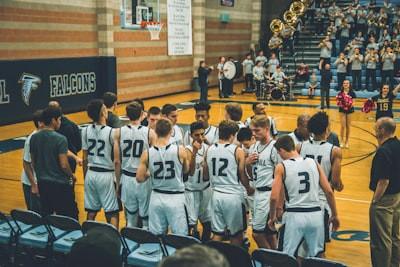How to Create Healthy Group Norms for Team Communication
Curated from: doist.com
Ideas, facts & insights covering these topics:
9 ideas
·4.27K reads
15
Explore the World's Best Ideas
Join today and uncover 100+ curated journeys from 50+ topics. Unlock access to our mobile app with extensive features.
Defining group norms
Group norms are the set of informal and formal ground rules that specify how people interact. The rules help members of the group determine how to behave. Advantages of clear ground rules within teams:
- Meetings and communication are more constructive.
- Teammates have a shared value system and work together to achieve goals.
- Everyone knows what is expected of them, and they live up to the expectations.
- Conflicts can be resolved more effectively and with understanding.
- New teammates can integrate more quickly.
130
1.05K reads
Intentionally create group norms
Every team has rules, but few are intentionally crafted. This could have a negative impact. For example:
- In a team of two, it's easy to create short back-and-forth emails. As more team members join, it becomes more complex keeping everyone in the loop. Emails may include reply-alls about weekend plans and real-time decision-making, leading to unread emails and lost information.
- A single individual dictates the rules for the group. He may inadvertently communicate late at night that can affect an entire company.
122
553 reads
How to create healthy group norms
Setting up norms is easiest when the team is first created. It may take a special meeting at the start, but it saves time and diminish problems down the road.
Shifting group norms in an established team is possible, too. Cultivate positive behavioral expectations on high-functioning teams.
125
506 reads
To solidify your team's shared rules, find allies
Creating norms requires the buy-in from most of the team members, including leadership.
The entire team needs to be engaged in the process for it to work very well.
123
473 reads
Get specific about objectives and guidelines
When managers don't provide clear direction, employees will fill in the details with assumptions. However, what managers require may differ greatly from what the employees think their managers expect.
To avoid confusion, write down straightforward objectives and guidelines that are measurable and achievable. Then have a share-out of each person's honest opinions, so everyone has an idea of what is working and what is not. Decide on only three changes to implement at a time.
130
389 reads
Getting everyone to follow the norms
Group norms are most effective when everyone follows them. If everyone agrees to the norms laid out, it will be easier to hold each other accountable.
It is important to post your norms somewhere visible and refer to them often.
121
336 reads
Gently enforce the norms
It's normal to expect that these rules will be bent or broken. The transition from unspoken to written norms can be smoother when it is decided in advance how to deal with the offense.
If you don't call attention to that norm, you inadvertently create a second set of norms. If a rule is expecting everyone to be on time and you don't point out when someone oversteps that norm, you're saying that it's not that important to be on time. Peer-to-peer enforcement with some humor is an effective way to enforce the norms.
124
301 reads
Norms are living agreements
They are not commandments set in stone.
It is valuable to continue to revisit them and change them as the team grows. Scheduling a meeting at regular intervals to provide feedback on the norms keeps the positive momentum going.
121
339 reads
Fostering a healthy environment
Google researchers found that the ability to take risks in a safe environment was at the top of the list of group norms and made for happier, high-performing teams.
- Be present in conversations and use active listening skills.
- Show understanding. Recap discussion points and validate comments verbally.
- Be inclusive. Express gratitude for teammates, build rapport, and encourage feedback.
- Show confidence and conviction. State your decisions clearly and allow for vulnerability.
132
327 reads
IDEAS CURATED BY
Griffin Q.'s ideas are part of this journey:
Learn more about teamwork with this collection
How to showcase your skills and experience
How to answer common interview questions
How to make a good first impression
Related collections
Similar ideas
3 ideas
How to Humanize Async Work
blog.doist.com
5 ideas
Storm To Perform: The 4 Stages Of Team Productivity
blog.trello.com
8 ideas
Can Remote Teams Be Innovative?
blog.doist.com
Read & Learn
20x Faster
without
deepstash
with
deepstash
with
deepstash
Personalized microlearning
—
100+ Learning Journeys
—
Access to 200,000+ ideas
—
Access to the mobile app
—
Unlimited idea saving
—
—
Unlimited history
—
—
Unlimited listening to ideas
—
—
Downloading & offline access
—
—
Supercharge your mind with one idea per day
Enter your email and spend 1 minute every day to learn something new.
I agree to receive email updates

